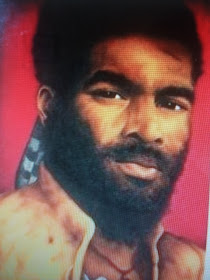Along with Spanish explorers, Moroccan born Estevánico
was one of the first native Africans to reach what later became Mexican territory before this territory was taken over by the United States after the Mexican-American war, namely Arizona and New Mexico.
Some
years ago while riding a city bus in Oakland, California; I found myself lecturing a group of Mexican-American high school students (in Spanish) who
apparently were not accustomed to meeting black folks, not to mention Afro Latinos, who can speak their
language. They laughed hysterically when they heard me. The little
"lesson" that I shared with them was a brief history of “Black” Latin America, which of course, includes Mexico.
Equally frustrating were some of my fellow African Americans, again in California, who questioned my racial identity because of
my Spanish and love for Afro-Latino culture, especially the music. They'd snicker and make comments, such as, “listen to this black
Mexican,” facetiously implying that the existence of black Mexicans is a mythical joke.
Let me begin by sharing one, hardcore, historical fact; there is a strong black heritage stretching from south of the border
all the way down to Argentina. This black heritage started a century
before it started here in the United States of America. Popular Latin music sounds, such as salsa, cumbia, tango, merengue, punta, and festejo, among many other genres, share African roots.
The National
Park Service of The U.S. Department of the Interior documented the following
regarding some of the Spanish explorers who happened to be of African ancestry:
Africans
and their descendants were a pertinent part of the settling and developing of
Spanish colonial societies. The infusion of African culture into the Spanish
colonies and the Americas as a whole can be seen in African techniques for
fishing, farming, cooking, building construction and other trades and crafts (Deagan and MacMahon 1995:15).
Gonzalo Aguirre Beltán
author of
"The Black
Population of Mexico"
In 2006,
the Chicago National Museum of Mexican Art opened a groundbreaking exhibition,
“the African Presence in Mexico.” During the early years of Spanish colonialism, the black population was
much larger in Mexico than that of the Spanish population until those black folks began intermarrying with the Spanish and the Indigenous for over a period of 500 years. Who knows, any of those Mexican-American students on that bus could unknowingly have African blood in their veins.
According
to the late anthropologist and professor at Mexico’s University of Vera Cruz,
Gonzalo Aguirre Beltrán, who published in his book, La Población Negra de
México (the Black Population of Mexico), more than 500,000 African slaves were
brought in through Mexico’s Port of Vera Cruz from 1519, the time of Cortez's invasion, until the day of Mexican independence in 1810. The Spanish relied on the slavery of Africans to expand their
empire and increase their wealth in Mexico and stretching all the way down through Argentina.
A statue of Mexico's rebel slave leader Gaspar Yanga
In
Mexico's state of Vera Cruz, an African slave rebel named Gaspar Yanga, born in what is now known as Gabon, West Africa, joined forces with another rebel slave
leader named Francisco de Matosa in battles against Spanish forces to establish Mexico’s first free town, a free
Black town independent of Spanish rule, 200 years before the rest of Mexico won
her independence.
After the cry for Mexican independence by Father Miguel
Hidalgo on Sept. 16, 1810, Spain’s worst nightmares became reality. The
first to respond to Father Hidalgo’s plea was liberal Spaniards who were born in Mexico (creoles) along with black and indigenous slaves seeking to earn their freedom as soldiers.
Father Juan Hidalgo
During
the Mexican War of Independence, which lasted from 1810-1821, it is estimated
that 30-40 percent of the rebel army was comprised of mixed-race Mexicans and
black folks. According to writer/researcher Jameelah Muhammad, a contributor to the book, "No Longer Invisible: Afro Latins Today by Minority Rights Press," it was the Ejército Moreno (the Colored
troops) who launched the independence struggle on behalf of Mexico.
When a mule driver named Vicente Guerrero, who happens to be the son of an African slave mother named María Guadalupe Saldaña, and a mestizo peasant father named Juan Pedro Guerrero, joined the Mexican
revolution, he distinguished himself in major battles achieving the rank of
captain, then colonel, and finally general showing superior tactical ability and
outstanding courage. With weapons and supplies captured from Spanish forces,
Guerrero took his little gang of fewer than 100 men and built it into
a strong, disciplined military force of over 1,000 warriors.
Vicente Guerrero
Mexico's Liberator & First Black President
One by one leading Mexican revolutionaries such as Father
Miguel Hidalgo, Ignacio Allende, Juan Aldama, Mariano Jimenez, and Javier Mina were slain or made prisoner. The rest accepted the king's
pardon. But General Vicente Guerrero remained the only major rebel leader still
at large and became the "Soul" of Mexican Independence.
On April 1, 1829, Vicente Guerrero became Mexico's second president. and at once abolished slavery. This is just one of reasons that the Mexican state of Tejas (pronounce Tay-Hahs) became the Lone Star state of Texas and revolted against Mexico and joined the American
Union.














